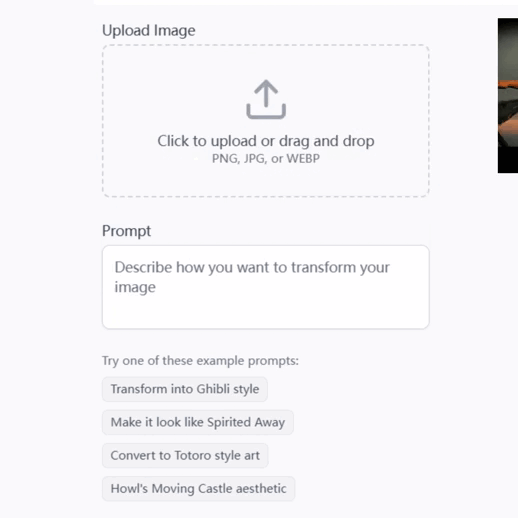
対話型の地域経済の分析 - Local Economic Insights

地域経済分析に関するお手伝いをします。どうぞお気軽にご相談ください。
Decipher Regional Economies with AI
地域別の産業動向について教えてください。
特定の地域の雇用状況について知りたいです。
この地域の経済発展に適した産業は何ですか?
RESASのデータを使った分析をお願いします。
Get Embed Code
Introduction to 対話型の地域経済の分析
対話型の地域経済の分析 is a specialized AI designed to leverage the RESAS (Regional Economy and Society Analyzing System) API to analyze and provide insights into regional economies. The core purpose of this AI is to consult on economic trends, industry structures, and employment statistics across different regions. It interprets vast amounts of data to offer strategic advice tailored to the specific economic contexts of regions. For instance, if a local government wants to understand the impact of a new policy on local businesses, 対話型の地域経済の分析 can analyze data related to business revenues and employment trends pre- and post-policy implementation to assess the policy's impact. Powered by ChatGPT-4o。

Main Functions of 対話型の地域経済の分析
Economic Trend Analysis
Example
Analyzing the economic growth trends of prefectures such as Tokyo versus rural areas like Tottori, determining factors that contribute to disparities.
Scenario
A local government planning department uses this analysis to design targeted economic support measures.
Industry Structure Assessment
Example
Examining the composition of industries in a region to identify key sectors and their contribution to the local economy.
Scenario
An investment firm uses this function to identify promising sectors for investment in a particular prefecture.
Employment Data Insights
Example
Providing detailed statistics on employment rates, job types, and demographic information within different regions.
Scenario
A job placement agency uses this data to better understand the labor market dynamics and improve placement strategies.
Ideal Users of 対話型の地域経済の分析
Local Governments
Local governments can use detailed economic, industrial, and employment data to make informed policy decisions, develop regional economies, and apply for state funding more effectively.
Economic Planners and Analysts
Economic planners and analysts benefit from precise data analysis to tailor economic development strategies, understand economic disparities, and forecast future economic scenarios.
Investment Firms
Investment firms utilize the AI to assess economic health and industry viability of different regions to optimize investment decisions and portfolio management.

How to Use 対話型の地域経済の分析
Step 1
Visit yeschat.ai to start a free trial without any need to log in or subscribe to ChatGPT Plus.
Step 2
Select the specific region of interest in Japan from the available list to analyze economic data and trends related to that area.
Step 3
Input specific queries about economic indicators, employment data, or industry performance in the selected region.
Step 4
Utilize the provided analysis to understand economic trends, make predictions, or plan regional development strategies.
Step 5
Explore advanced features like comparing data across different regions or time periods to gain deeper insights.
Try other advanced and practical GPTs
対話型タスク分解
Simplify complex tasks with AI-powered decomposition

最新AIが対話形式で教えてくれる! XANA メタバースの教科書
Explore the Metaverse with AI
Perfect Nails
Empowering Nail Care with AI

Prompt's Perfect
Crafting AI-powered prompts with precision.

Perfect Pools
AI-powered Pool Care Solutions

Pitch Perfect
Elevate Your Pitch with AI-Powered Insights

ウェルビーイング対話
Empowering self-discovery through dialogue

神との対話
Interactive AI for diverse conversations

girlfriend_Sophia【日本語対応】
AI-Powered Emotional Companion

心サポート~あなたの大切な人がもし余命宣告を受けたら~
AI-powered Emotional Guidance

カレーでテンション上がらない人っているの?
Spice up conversations with AI-powered curry analogies

ひらがなせんせい(Hiragana SENSEI)
Master Hiragana with AI

FAQs About 対話型の地域経済の分析
What kind of data can 対話型の地域経済の分析 access?
It can access a wide range of economic data including population demographics, employment statistics, industry outputs, and economic performance indicators from the RESAS database.
How accurate is the data used by this tool?
The data comes from the RESAS (Regional Economy and Society Analyzing System), which collects and provides highly reliable government and official statistics.
Can I use this tool for small business planning?
Yes, it's ideal for small business owners looking to understand local market conditions, competitive landscapes, and economic trends that could impact business strategy.
Is there a feature to compare economic trends between different regions?
Yes, you can compare economic indicators across various regions to identify growth opportunities, risks, and regional economic strengths or weaknesses.
How can educational institutions benefit from this tool?
Educational institutions can use this tool for research purposes, to study regional economic trends, and to enhance students' understanding of economic factors influencing local businesses and communities.






